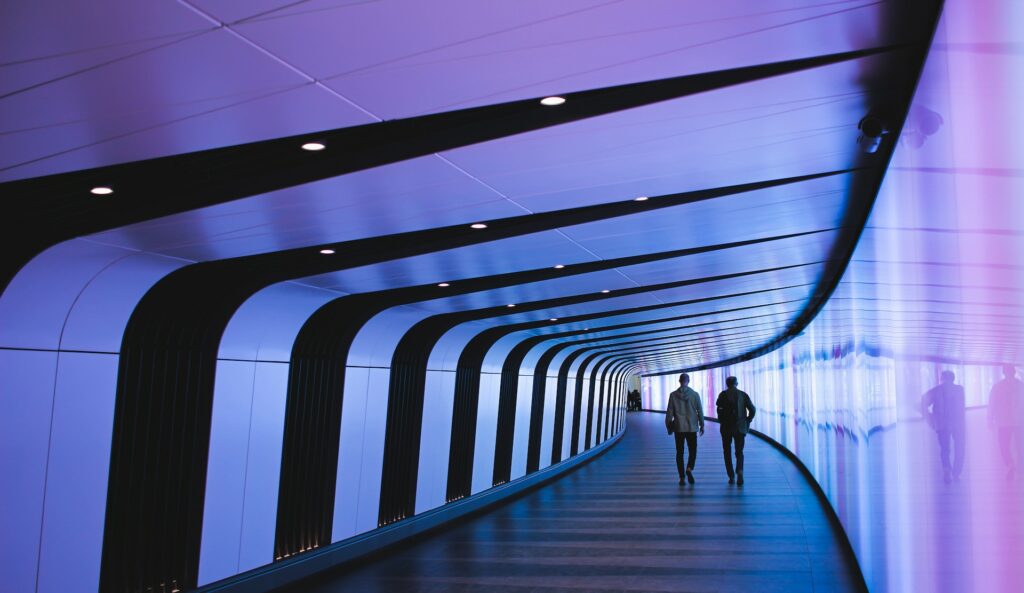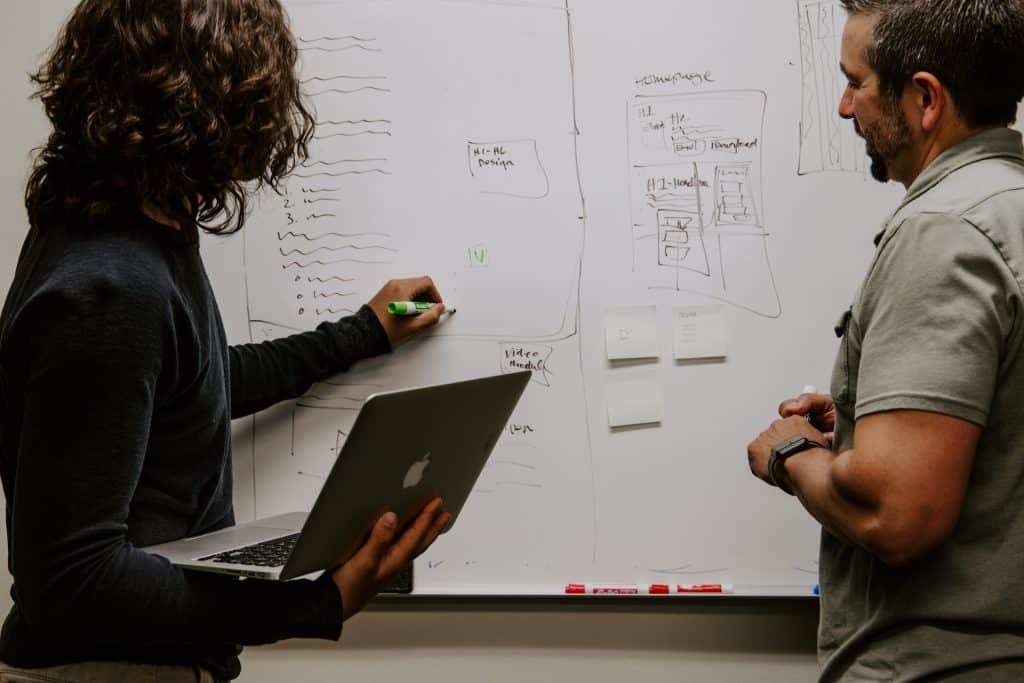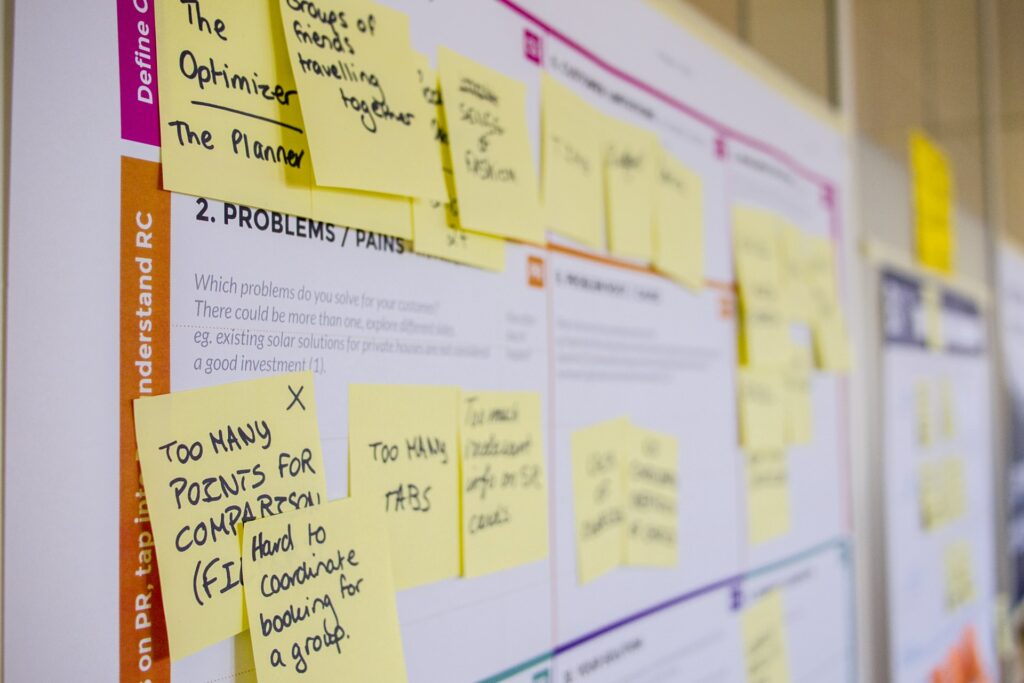Application Modernization Strategy That Always Works for SaaS Companies
We created this article to talk about:
- What benefits every SaaS company should expect from App Modernization?
- How to align an Application Modernization Strategy with business goals?
- How to Modernize SaaS Apps and Platforms they are run on?
- How to build a real-world App Modernization Roadmap?
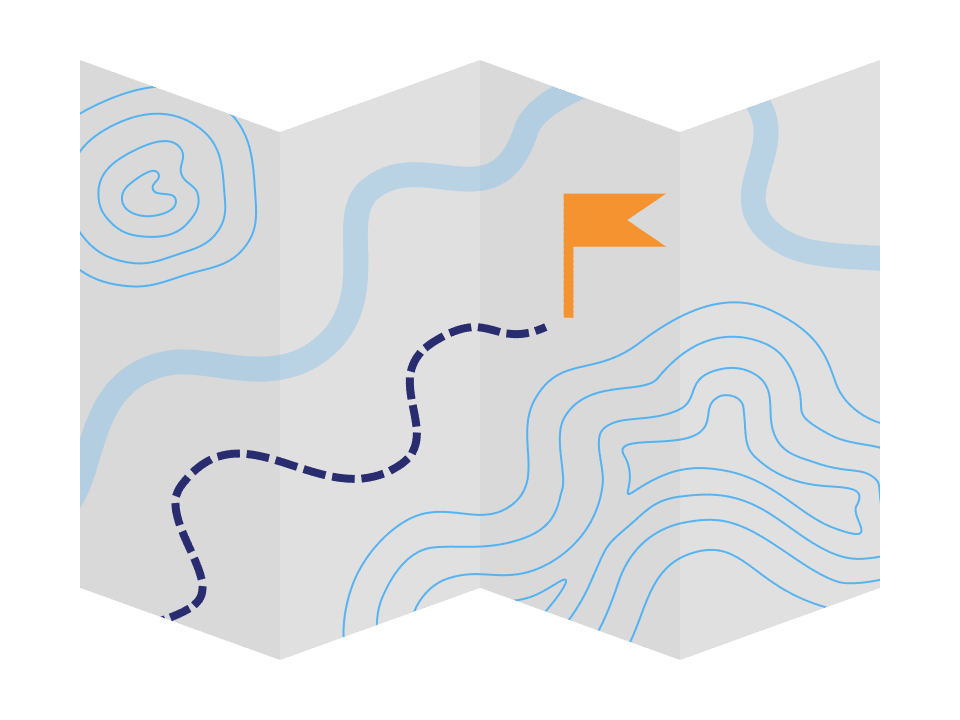
Table of Contents
Have you noticed that you are losing competitive advantage because your applications just don’t perform at the same level anymore?
The digital world is changing faster than ever, and to keep up with the modern market demands, businesses will have to face their legacy apps and the bottlenecks they create.
If you feel like your current systems are not giving you an advantage anymore, or that the legacy applications you are working with are starting to require more and more maintenance in order to interact with modern apps, it may be the time to consider Application Modernization for your business.
Fortunately, you are not the first person to face these obstacles.
In this article, our experts have combined their 17+ years of experience of serving various SaaS companies from AdTech, EdTech, and HealthCare fields to talk about the fundamental steps of building an exclusive Application Modernization Strategy.
We will also outline how to align App Modernization Strategy with your business goals and how to build an Application Modernization Roadmap based on your business’s stakeholders’ needs.
Without further ado, let’s dive into this subject!
Table of Contents
What is Application Modernization?
Many companies tend to maintain their software systems and applications for years. Usually, this approach works out fine while it allows users to keep their subscriptions to the said systems, which is, in turn, beneficial for business. However, such applications and platforms can become hard to maintain. This case becomes apparent when your developers start to spend more time on maintenance than on productive updates, or when the cost of maintenance outgrows the cost of replacing the software all together. These systems are called legacy; their usage doesn’t bring any benefits to the users, and causes profit losses.
Application Modernization is a process of updating old applications and platforms to make them fast, reliable, and profitable yet again.
App Modernization can generally be achieved in three common ways:
- Updating the application – rewriting or redesigning certain parts of the code to bring the app up to speed.
- Rehosting the application – moving the app off the mainframe to another infrastructure, usually to a cloud environment.
- Replacing the application – completely removing the legacy app in a rip-and-replace process and putting a brand new software system in its place.
Generally speaking, App Modernization is a natural way of introducing innovation, adopting new technologies, and staying competitive for SaaS and Enterprises.
Why Modernize Legacy Apps and Platforms They are Run On?
The short answer will be to remain competitive and improve ROI by delivering a better customer experience in a cost-effective way.
How App Modernization Improves ROI
Clients have generally indicated three main economic benefits from application modernization in their businesses:
- Reduced costs
- Greater operational efficiency
- Improved software developers’ productivity
Resolving the challenges of legacy apps has been proven time and time again to be beneficial to a business’s financial success. And for companies that haven’t been “born digital”, overhauling their outdated software can sometimes be the key to staying competitive in the modern market.
Future of App Modernization
Gartner shows that IT spending will keep growing, which means that businesses will keep investing in Software Development AND App Modernization.
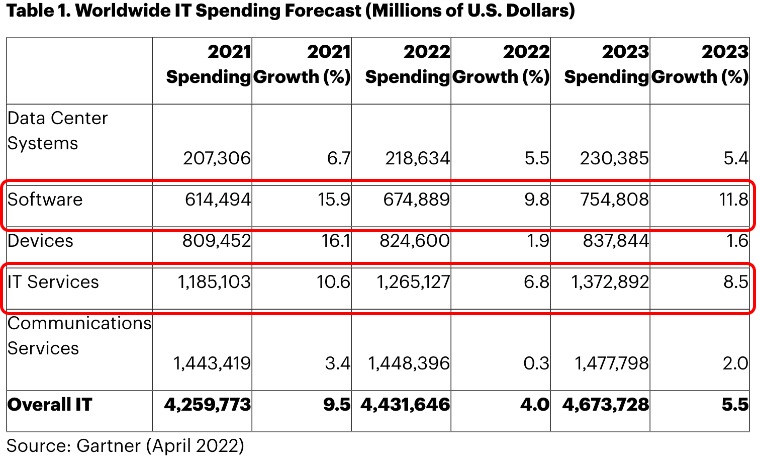
The data shows that Software spending is expected to grow 11.8% to reach $754.8 billion in 2023, and that IT Services is expected to grow 8.5% to reach $1.37 trillion in 2023. This indicates that the trend towards digitalization is predictable, systematic, and long-term. For your business, in turn, this means that modernizing your software systems is bound to bring in revenue, and is definitely worth the investment.
In the ideal world, to ride the tide of the ongoing IT expansion trend, you will need to turn your Legacy App into a Modern App by accomplishing a Modernization Project.
But that is easier said than done…
What Benefits Should You Expect from an App Modernization Project?
Based on the research and facts we mentioned earlier, there is no denying that Application Modernization will bring benefits to your business. But what actual, quantifiable benefits should you expect to see after applying a modernization project to your legacy app?
We have compiled a list of benefits of app modernization to consider:
- better customer experience
- reduced time-to-market
- optimized IT cost
- improved profitability
- improved SLA
- increased staff productivity
- simplified business operations
- shorter release cycles
- technical debt removal
- new technology adaptation
- introduced DevOps practices
- improved SDLC
What Parts of your System Should be Modernized?
Every Application Modernization Journey starts with planning and road mapping. In fact, it begins with answering these 3 fundamental questions:
- What part of the system requires modernization?
- What is the right modernization approach for our SaaS company?
- When should we expect to see the results?
The answer to the first question lies in Understanding Business Goals and Stakeholder Needs. Also, it is important to collect Stakeholder Hassles caused by using the Legacy App.
Understand Business Goals of SaaS Organization
According to our experience at Romexsoft, it’s always a good idea to start your modernization project by talking with C-level executives to understand the business goals of their SaaS organization.
Getting the CEO’s opinion on how the App Modernization Project could help meet the already envisioned business goals will provide a clear set of outcomes to be reached.
We can say that when it comes to SaaS companies, almost all business executives are talking about ARR (Annual Recurring Revenue): how to keep the current level of ARR and Profit, and how to increase these metrics in the next period.
Consequently, User Churn and Customer Base Growth Rate are the most important metrics for executives in every SaaS organization. To keep track of these metrics, they are constantly asking themselves and their colleagues these questions:
- How to attract new users?
- How to keep existing customers happy to keep the current ARR?
- How to increase revenue?
- How to decrease TCO?
- How to improve ROI?
Giving the answers to those business-related questions, and setting concrete finance goals will give you a general direction for your modernization journey. To put it in simpler words, these answers will be your North Star, the beacon of your modernization project… Putting them on your app modernization journey map at the very beginning is a good practice to help you remember what was the starting point of your project, and what is your final goal.
After clearly outlining the business goals with the SaaS CEOs, you should ask them which metrics they track. Most of the SaaS CEOs, as well as their CMOs and CPOs, have a clear understanding of what SaaS metrics they want to improve this year and/or this quarter. So, sometimes it can be as simple as asking the executives to share these goals with you, so that you can align your App Modernization Project with their Business Objectives.
Collect Stakeholders Needs
After talking to SaaS Executives, we recommend collecting Stakeholder needs, hassles, and improvement suggestions for the App Modernization Project.
Here is a short list of SaaS Stakeholders to consider, and the questions they might deem important to answer from their point of view:
- How can IT spending improve business results?
- How can we simplify our business operations?
- What is the right architecture for our SaaS platform?
Build a Stakeholders Hassle Map
It can be useful to build a Stakeholders Hassle Map. The map will help you identify the real business issues that need to be improved during the modernization project.
So, interview the SaaS Stakeholders and start drilling down by asking them more specific questions, like the ones listed below (completed with the sets of possible answers):
- new functionality implementation
- UI/UX improvement
- latest security standards & compliance introduction
- bugs fixing
- performance improvements
- SLA improvements
What can be done to reduce IT costs?
- review & remove unnecessary IT assets
- conduct cost optimization
- review approach to software development
- organize shorter release cycle
- introduce Agile development practices
- implement modern DevOps practices
After you have outlined your Business Goals and figured out your Stakeholder Needs, you can start figuring out which parts of your system need to be modernized.
Identify Components and Processes for Modernization
The next step after interviewing SaaS CEOs and Stakeholders is to provide an inventory of the existing Apps and the Platforms they are run on. After doing so you will be able to identify and prioritize things for your modernization project.
Here is a list of items, both IT system components and processes, that you might identify as good candidates for modernization, which you can then prioritize according to your business needs:
- Apps
- Data Sources
- Infrastructures
- Software Delivery & Engineering
- Management & Governance
- Operations
Finally, after settling on areas of modernization, you can move on to answering the last question: what drivers of modernization should you use? To put it in simpler terms, you should ask yourself: What will be the main guidelines of your app modernization journey?
How to Modernize SaaS Apps and Platforms
Determine Modernization Drivers
According to AWS Well-Architected Framework recommendations, there are 6 important characteristics every Modern Application should have. In other words, these 6 core pillars of AWS Well-Architected Framework are a way to determine the right Modernization Drivers for your App Modernization Project:
- Operational Excellence
- Security
- Reliability
- Performance Efficiency
- Cost Optimization
- Sustainability
Romexsoft can provide an AWS Well-Architected Review of your SaaS platform to provide visibility on each pillar. A detailed Assessment Report of your SaaS platform, provided by Romexsoft’s AWS certified Solutions Architects, can help you choose the right drivers for your modernization project.
Choose Application Modernization Approach
There is a variety of Application Modernization Approaches you can choose from to apply to your modernization project. Depending on the project needs, you can choose a particular approach, or use a combination of multiple approaches, and either apply them to some part of your system, or to the whole system itself.
But no matter which option you choose to pursue, picking an App Modernization Approach is considered a key decision which will impact the scope of work, the timeline, and the budget of the whole modernization project.
The most common Cloud Application Modernization Approaches are listed below:
- Rehost approach, also known as the “lift-and-shift” approach, stands for migrating AS IS, meaning the migration is done without implementing any cloud optimizations. It works well when the migration has to be done quickly.
- Relocate approach is used when the apps, data, and operations need to be transferred to a cloud environment without any further modifications. For instance, the relocate scenario is often used to move an existing cloud infrastructure to a different AWS Region or AWS account.
- Replatform approach works well when there is no need to change the application logic and architecture. In this instance, the tangible benefits of using the Replatform approach come from switching the on-premises databases and application servers to fully managed AWS cloud services and/or platforms.
- Refactor approach is the best option in situations where it is required to re-architect an existing application in order to add new features and meet business needs in terms of scale and reliability. The refactor scenario can be considered as the most beneficial strategy, as it infers using modern technology and cloud-native features.
Modernize Your Business! Contact AWS Experts Today.
How to Build an App Modernization Roadmap
Explore Romexsoft’s App Modernization Value Pyramid
Our professionals at Romexsoft took their years of experience and compiled the App Modernization Value Pyramid into a graphic model. The model showcases areas of app modernization values, with more objective items being at the base of the pyramid, and the more subjective items situated at the top.
To draw more familiar parallels, the pyramid follows the famous Maslow hierarchy of needs framework, applying it to Application Modernization principles.
Explore Romexsoft’s App Modernization Value Pyramid below to determine the most important goals you want to achieve with your App Modernization Project.
Looking at the base level we can see the technical values of Application Modernization – the tangible items that can be measured and compared before and after the implementation of the modernization project to gauge improvement.
Above the base level lie the operational values: productivity, time-to-market, and business continuity. These elements make doing business easier by reducing the time and effort required to be spent in order to complete a task.
Following the pyramid further up we find the business value level. These metrics reflect the state of your business and add value to it when improved.
You can clearly see that we’ve put better customer experience on top of the pyramid. We did so because here at Romexsoft we believe that customer is king, and that no matter how long the list of values a project may produce, customer satisfaction remains at the top of our priorities.
You can either choose to work on all three areas of App Modernization we have indicated, or focus on just one or two of them, but always remember to go through the value levels of the pyramid from the bottom up.
This approach will lead you to delivering better customer experience on top of all other areas where you’ve reached improvement as a result of application modernization.
Build an App Modernization Roadmap
After you’ve taken the time to understand your SaaS business goals, and identified the SaaS stakeholder hassles that need to be resolved, prioritize these two tasks for your modernization project according to the time-to-value principles. Time-to-value can be simply explained as whatever task you do first will bring value quicker.
Based on our experience, using a time-to-value approach works pretty well for SaaS companies. Putting an emphasis on time-to-value in your modernization project will help you reach its objectives faster. This, in turn, will bring in positive ROI and strengthen customer relationships, both of which are, as we have already established, important metrics for SaaS executives.
The Modernization Roadmap is a specific project plan that needs to be implemented without interrupting existing business operations.
A well designed App Modernization Roadmap is aligned with:
- business goals
- stakeholder needs
- current IT assets (apps, infrastructures, data sources, environments)
- available resources (budgets, information, development capacity)
- technical expertise and hands-on experience
- established engineering practices
- ongoing business operations
- organizational timelines
To turn your outdated app into a modern app, you need to follow the Legacy Application Modernization Process, which usually includes the following activities:
- bug fixing
- tech debt removal
- IT spending optimization
- performance improvements
- new functionality implementation
- latest security standards implementation
- development & deployment cycles improvements
To build an App Modernization Roadmap that will bring your SaaS to a new level, you need to:
- first of all, gather the Business Goals
- then, collect Stakeholder Needs and Hassles
- then, identify Items to Modernize. In other words, determine what items of your system require modernization
- after that, choose the Modernization Driver(s) you will follow during the whole project
- then, select the App Modernization Approach that suits your project the most
- finally, to maximize productivity of your Roadmap, prioritize tasks by using time-to-value method
At the end of this process, you will get an accurate App Modernization Roadmap that is uniquely tailored for your organization.
Conclusion
According to Romexsoft’s 17+ years of experience, the App Modernization Strategy that is focused on growing the SaaS user base by delivering a better customer experience in a cost-effective way is an approach that always works for SaaS companies.
It’s safe to say that the best option for a SaaS company would be to develop the App Modernization Strategy with business continuity in mind. Business continuity, in turn, is achieved by following the Continuous App Modernization principles. These principles allow SaaS companies to deliver new features, improve existing software, and introduce innovation without causing business destruction.
It’s worth noting that Continuous App Modernization is a common practice for Hypergrowth SaaS Companies and Enterprises.
In the long run, every company should strive for a Continuous App Modernization approach to respond to rapid market shifts and deliver only the best customer experience.
Application modernization strategy FAQ's
An application modernization strategy can significantly enhance the performance of SaaS applications by replacing outdated components with modern, cloud-based solutions. This can lead to improved scalability, reliability, and efficiency, as well as reduced maintenance costs. Moreover, modernized applications can better meet the evolving needs of users, leading to improved customer satisfaction and retention.
When choosing an application modernization approach, several factors should be considered. These include the current state of the application, the desired end state, the available resources (both financial and human), and the potential risks and benefits of different approaches. Additionally, the specific needs and constraints of the business should be taken into account, such as regulatory requirements, customer expectations, and strategic goals.
The key drivers of application modernization typically include the need to improve business agility, reduce costs, enhance customer experience, and leverage new technologies. For instance, businesses may want to modernize their applications to take advantage of cloud computing, artificial intelligence, or other emerging technologies. Additionally, application modernization can be driven by the need to address issues with legacy systems, such as high maintenance costs, poor performance, or lack of scalability.
To ensure the success of their application modernization strategy, businesses should start by clearly defining their goals and objectives. This includes understanding the needs and expectations of stakeholders, as well as the specific challenges and opportunities presented by their existing applications. From there, businesses should develop a detailed roadmap for modernization, outlining the steps to be taken, the resources required, and the expected outcomes. Throughout the process, it's important to monitor progress, measure results, and adjust the strategy as needed.
